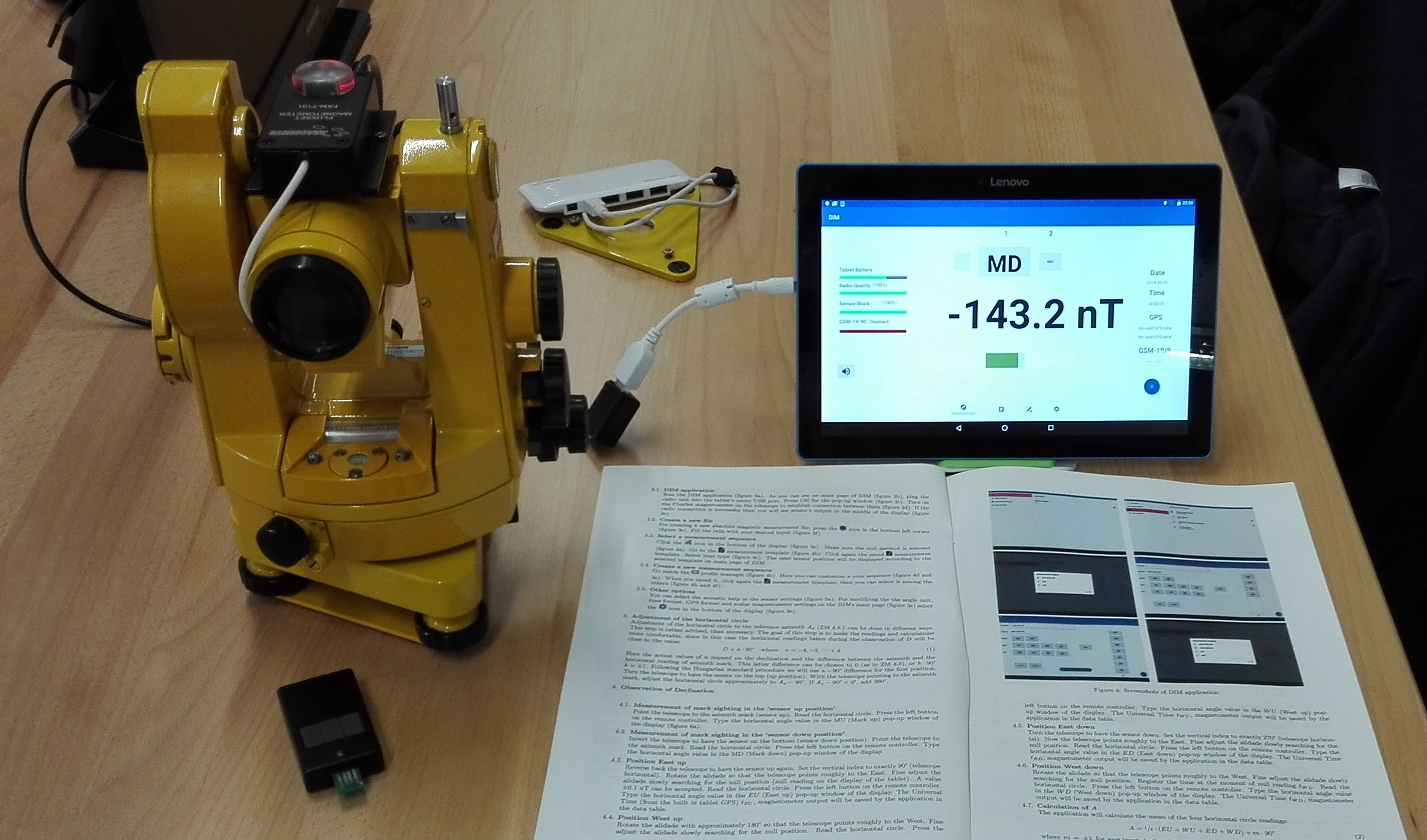FLUXGATE© magnetometer mounted on a non-magnetic theodolite with radio link

Most widely used D/I flux theodolites for absolute observations have two separate units connected to each-other with cable. This solution is inconvenient and the instrument can be effected by external electromagnetic disturbances. The problem can be avoided if the magnetometer electronics is together or is close to the sensor and the magnetometer is connected to the display unit via radio link. The final goal of our project is to develop a semi-automatic instrument and procedure to carry out absolute observations.

Simple construction and low power consumption of FLUXGATE magnetometer allows to put it together with a battery into a small box and place everything on the telescope of the theodolite. This way it moves together with the sensor during the whole measurement procedure. Any possible small magnetic moment will be cancelled by this method.
The MinGeo Fluxgate Declination/Inclination Magnetometer (DIM) can be used for measurements of the magnetic field. The DIM itself is suitable for determining the direction, i.e. the Declination D and the Inclination I of the field vector only, but not its magnitude. The properly used DIM gives the mean absolute value of D and I for the observing period with a small error. Combined with a total field instrument (proton precession magnetometer, Overhauser magnetometer, optically pumped magnetometer, etc.) the DIM is capable to describe all magnetic elements. The DIM consists of a steel free ZEISS 10/15/20 theodolite and a one axis Fluxgate magnetometer (Type FXM-T101) mounted on its telescope. A large-screen android tablet and a small radio unit with a micro USB port are included in the package of DIM equipment. In the tablet there is an android application named by DIM, which is designed to facilitate the absolute magnetic measurement.
The theodolites are transformed steel-free from commercially available geodetic theodolites. During this cleaning process all elements are checked magnetically and any part contaminated is removed and replaced for components made of non-magnetic material. The extremely magnet free device (everywhere less than 1 nT at 1 cm distance from the surface of the instrument) makes it possible to carry out precise measurements. The high sensitivity Fluxgate magnetometer yield 0:1 nT resolution field reading. The offset of the electronics is set to less than +/- 10 nT. The magnetic axis of the sensor fixed on the theodolite is carefully adjusted to the optical axis of the telescope within some tens of arc seconds. This manual gives procedures for absolute measurement, describe the use and maintenance of the DIM instrument, including the readjustment of the sensor and the electronics offset. For more details on the use of the theodolite see the cited Zeiss Manual (hereafter ZM).
New data recording system:
Measured magnetometer data with precise time stamp can be saved by the tablet. After the measurement session all data can be downloaded via USB port to a processing PC from the tablet.Instrument charging needs 10 to 18 V DC or 100 to 240 V AC for convenient observatory and field use.
| Theodolite | ||
|---|---|---|
| type: | Zeiss THEO 010/020 | |
| Magnetometer | ||
| operating range: | +/- 6 uT | |
| measuring range: | +/- 200 nT | |
| resolution: | 0.1 nT | |
| offset error: | +/- 1 nT | adjustable |
| Display unit | ||
| characters: | 54 mm (3.5 digit+sign) | |
| radio link: | 2 | 4 GHz |
| working range: | > 15 m | |
| operating time: | > 12 hr | |
| charging time: | ~ 8 hr | |
